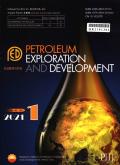Differential accumulation characteristics and production of coalbed methane/coal-rock gas: A case study of the No. 8 coal seam of the Carboniferous Benxi Formation in the Daji block, Ordos Basin, NW China
IF 8
Q1 ENERGY & FUELS
引用次数: 0
Abstract
Based on the coalbed methane (CBM)/coal-rock gas (CRG) geological, geophysical, and experimental testing data from the Daji block in the Ordos Basin, the coal-forming and hydrocarbon generation & accumulation characteristics across different zones were dissected, and the key factors controlling the differential CBM/CRG enrichment were identified. The No. 8 coal seam of the Carboniferous Benxi Formation in the Daji block is 8–10 m thick, typically overlain by limestone. The primary hydrocarbon generation phase occurred during the Early Cretaceous. Based on the differences in tectonic evolution and CRG occurrence, and with the maximum vitrinite reflectance of 2.0% and burial depth of 1 800 m as boundaries, the study area is divided into deeply buried and deeply preserved, deeply buried and shallowly preserved, and shallowly buried and shallowly preserved zones. The deeply buried and deeply preserved zone contains gas content of 22–35 m3/t, adsorbed gas saturation of 95%–100%, and formation water with total dissolved solid (TDS) higher than 50 000 mg/L. This zone features structural stability and strong sealing capacity, with high gas production rates. The deeply buried and shallowly preserved zone contains gas content of 16–20 m3/t, adsorbed gas saturation of 80%–95%, and formation water with TDS of 5 000–50 000 mg/L. This zone exhibits localized structural modification and hydrodynamic sealing, with moderate gas production rate. The shallowly buried and shallowly preserved zone contains gas content of 8–16 m3/t, adsorbed gas saturation of 50%–70%, and formation water with TDS lower than 5 000 mg/L. This zone experienced intense uplift, resulting in poor sealing and secondary alteration of the primary gas reservoir, with partial adsorbed gas loss, and low gas production rate. A depositional unification and structural divergence model is proposed, that is, although coal seams across the basin experienced broadly similar depositional and tectonic histories, differences in tectonic intensity have led to spatial heterogeneity in the maximum burial depth (i.e., thermal maturity of coal) and current burial depth and occurrence of CRG (i.e., gas content and occurrence state). The research results provide valuable guidance for advancing the theoretical understanding of CBM/CRG enrichment and for improving exploration and development practices.
煤层气/煤岩气差异成藏特征及生产——以鄂尔多斯盆地大集区块石炭系本溪组8号煤层为例
基于鄂尔多斯盆地大集区块煤层气/煤岩气地质、地球物理和实验测试资料,剖析了不同带间的成煤生烃成藏特征,识别了控制煤层气/煤岩气富集差异的关键因素。大集区块石炭系本溪组8号煤层厚度为8 ~ 10 m,上覆灰岩。主要生烃期发生在早白垩世。根据构造演化和CRG产状的差异,以最大镜质体反射率2.0%和埋深1 800 m为界,将研究区划分为深埋深保存带、深埋浅保存带和浅埋浅保存带。深埋深保存带含气量22 ~ 35 m3/t,吸附气饱和度95% ~ 100%,地层水总溶解固体(TDS)大于5万mg/L。该区构造稳定,密封能力强,产气量高。深埋浅保存带含气量16 ~ 20 m3/t,吸附气饱和度80% ~ 95%,地层水TDS为5 000 ~ 5 000 mg/L。该区表现为局部构造改造和水动力密封,产气量适中。浅埋浅保存带含气量8 ~ 16 m3/t,吸附气饱和度50% ~ 70%,地层水TDS < 5 000 mg/L。该带隆升剧烈,导致原生气藏封闭性差,发生二次蚀变,部分吸附气损失,产气量低。提出了一种沉积统一与构造辐散模式,即尽管盆地各煤层经历了大致相似的沉积和构造历史,但构造强度的差异导致了最大埋藏深度(即煤的热成熟度)和当前埋藏深度及CRG的赋存状态(即含气量和赋存状态)的空间异质性。研究成果对推进煤层气/CRG富集理论认识和改进勘探开发实践具有重要指导意义。
本文章由计算机程序翻译,如有差异,请以英文原文为准。
求助全文
约1分钟内获得全文
求助全文

 求助内容:
求助内容: 应助结果提醒方式:
应助结果提醒方式:


